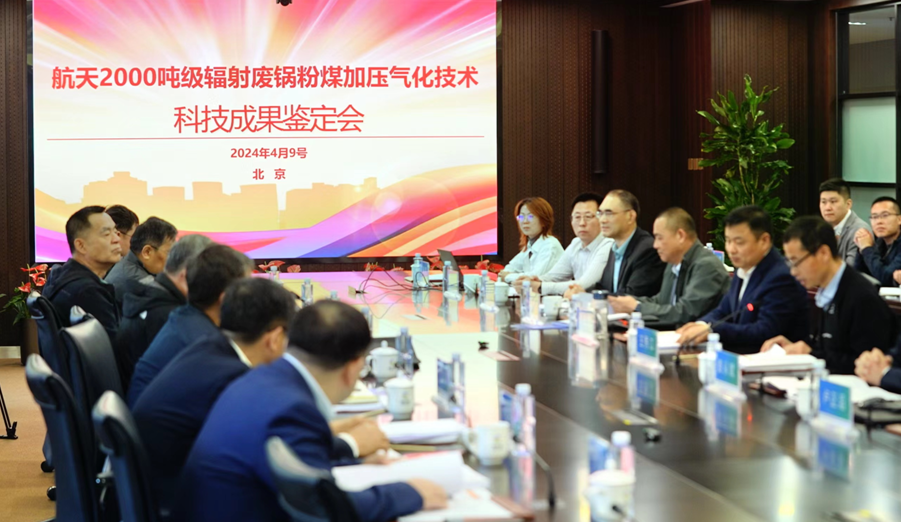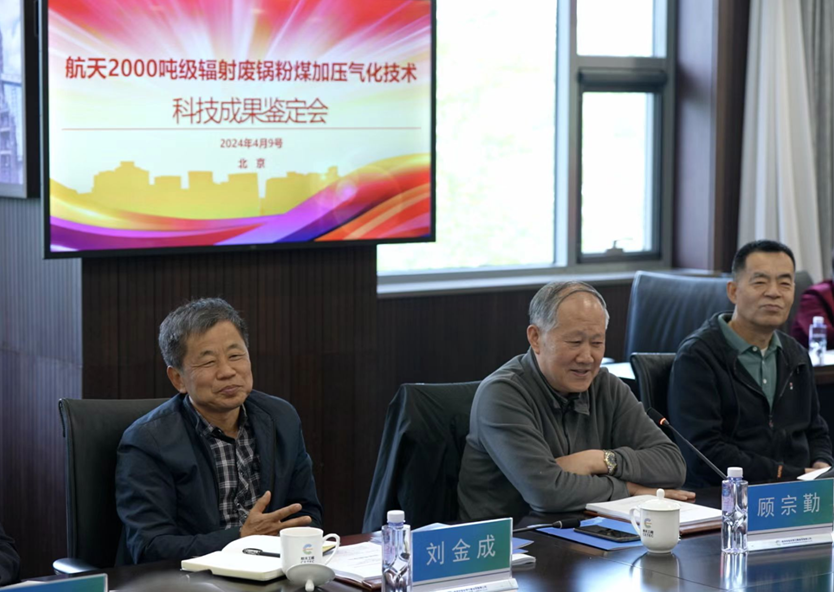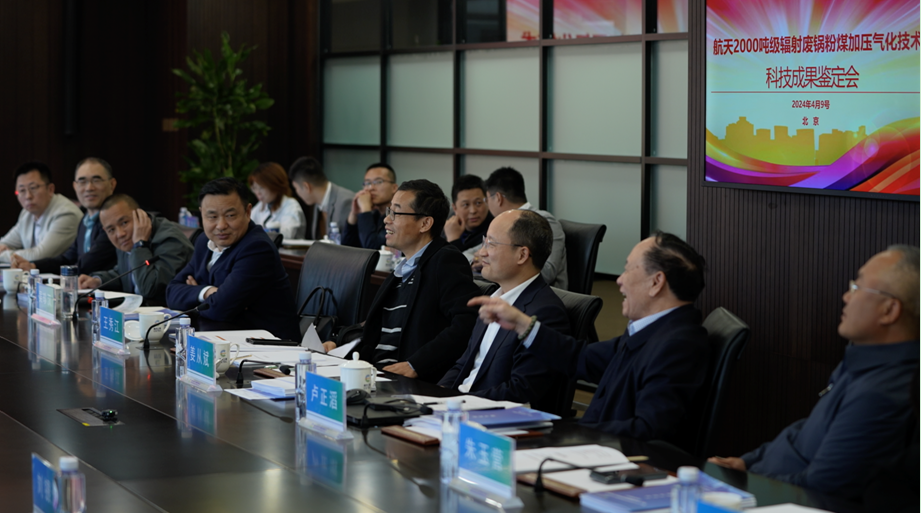The 2,000-ton semi-waste boiler aerospace furnace has passed the appraisal, solving the industry problem of steam attenuation
On April 9, 2024, the China Petroleum and Chemical Industry Federation organized a scientific and technological achievement appraisal meeting for the "Aerospace 2,000-ton Dry Coal Powder pressurized gasification Radiant Semi-waste Boiler Technology" (referred to as the semi-waste boiler aerospace furnace) in Beijing. This technology was jointly accomplished by Aerospace Changzheng Chemical Engineering Co., LTD., Anhui Haoyuan Chemical Group Co., Ltd. and Sichuan Chuanguo Boiler Co., LTD. The appraisal committee believes that this achievement is highly innovative, possesses independent intellectual property rights, and the by-product steam from the radiation waste boiler is stable without attenuation, achieving long-term stable operation.

The picture shows the scene of the appraisal meeting
Gu Zongqin, the chairperson of the appraisal committee and the president of the China Nitrogen Fertilizer Industry Association, stated that the issue of steam attenuation in gasifier waste POTS is a difficult problem in the industry. The semi-waste boiler space furnace appraised this time has achieved stable operation for over 200 days in the Haoyuan project, and the steam output has not declined. This is a milestone of significant progress. This technology can recover energy and generate high-grade steam, significantly reducing the consumption of fuel coal. It not only brings considerable economic benefits and contributes to energy conservation and carbon reduction, but also creates conditions for the modern coal chemical industry not to use coal-fired boilers, which is of great significance to the development of China's modern coal chemical industry.

It is understood that as the birthplace of dry pulverized coal fluidized bed gasification technology in China, the Aerospace Engineering Company adheres to independent innovation and is committed to developing advanced coal gasification technologies that are suitable for the clean and efficient utilization of coal in China. It has successively overcome difficulties such as high reliability of coal gasification units, long service life of burners, adaptability to coal types, and large-scale and high-pressure operations. In 2015, the company initiated the research and development of radiation waste boiler gasification technology, and in 2017, it was approved for a project under the National Key Research and Development Program. During the research and development process, the prediction method for the degree of ash accumulation in the radiation waste pot was mastered, and a tube-screen combined structure for the radiation waste pot was developed. In particular, in response to the industry problem of reduced steam production caused by ash accumulation in waste boilers, the slag cold curtain wall technology and the shaking ash cleaning solution were developed, resulting in a series of technological achievements. The new technology was a success upon its first application in the Haoyuan project.
Wu Zhenhan, assistant general manager of Anhui Haoyuan Chemical Group, introduced that the semi-waste boiler aerospace furnace was applied in the relocation and transformation project of Haoyuan Group with an annual output of 300,000 tons of synthetic ammonia, 400,000 tons of urea and 200,000 tons of caprolactam. This is the seventh aerospace furnace adopted by Haoyuan Group. The gasification unit began construction in January 2022 and was successfully ignited and started up in one go on September 12, 2023. The next day, it produced qualified synthetic ammonia products and has been operating stably since then, achieving safe, stable, long-term, full-load and high-efficiency operation.
The 72-hour continuous operation assessment results of the Haoyuan gasification unit show that the assessment data are all better than the design values. From the first feeding to the end of the assessment, it has been operating stably for more than 200 days continuously, and the by-product steam volume has not decreased. Compared with the quenching process, the steam output of this gasification unit remains at 50 tons per hour, with significant economic benefits. The investment in the waste boiler can be recovered within one and a half years.

The appraisal committee believes that this technology has developed the first set of independently developed dry pulverized coal pressurized gasification radiant semi-waste pot technology in China, and agrees to pass the appraisal. The main innovation points are in three aspects: First, an experimental device for the cold-wall deposition characteristics of high-temperature molten ash particles was developed, and a prediction method for the degree of ash accumulation of coal ash in radiation waste boilers was proposed. Second, based on the radiation characteristics of high-temperature and high-pressure reducing gases, an efficient heat recovery radiation waste pot has been developed. Thirdly, the slag cold curtain wall technology was developed to reduce the viscosity of ash and slag and the probability of collision, and to alleviate the accumulation of ash in waste POTS. At the same time, the pressurized vibration ash removal technology is utilized to remove the accumulated ash on the heating surface online, ensuring the stability of the by-product steam.
It is understood that the semi-waste boiler process gasification technology is gradually becoming one of the core technologies in industries such as coal-based hydrocarbons, ammonia synthesis, and methanol synthesis, which is of great significance for the transformation and upgrading of coal chemical industry and the reduction of carbon emissions. The "Implementation Guidelines for Energy Conservation and Carbon Reduction Transformation and Upgrading in Key Areas of High Energy-Consuming Industries (2022 Edition)" issued by the National Development and Reform Commission, the Ministry of Industry and Information Technology, and other departments clearly states that efforts should be accelerated to popularize and promote the process technology of large-scale advanced coal gasification and semi-waste/full waste boilers, and orderly promote industrial transformation and upgrading.
